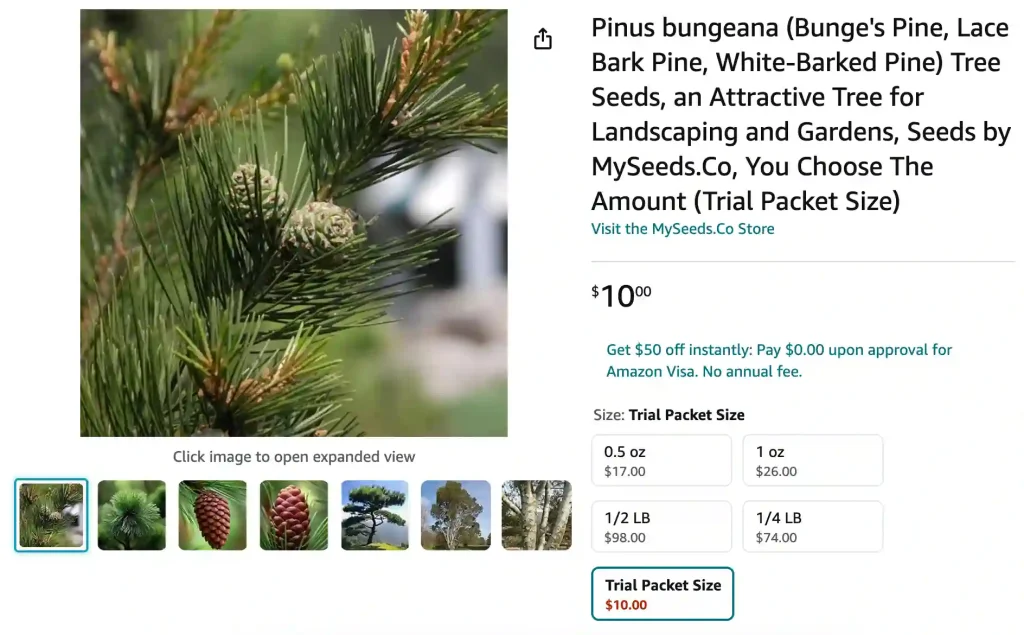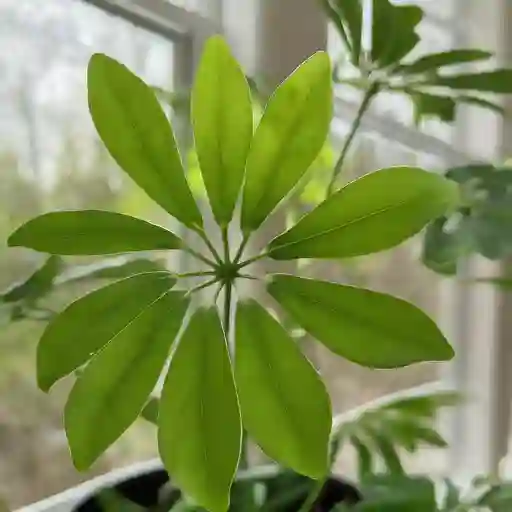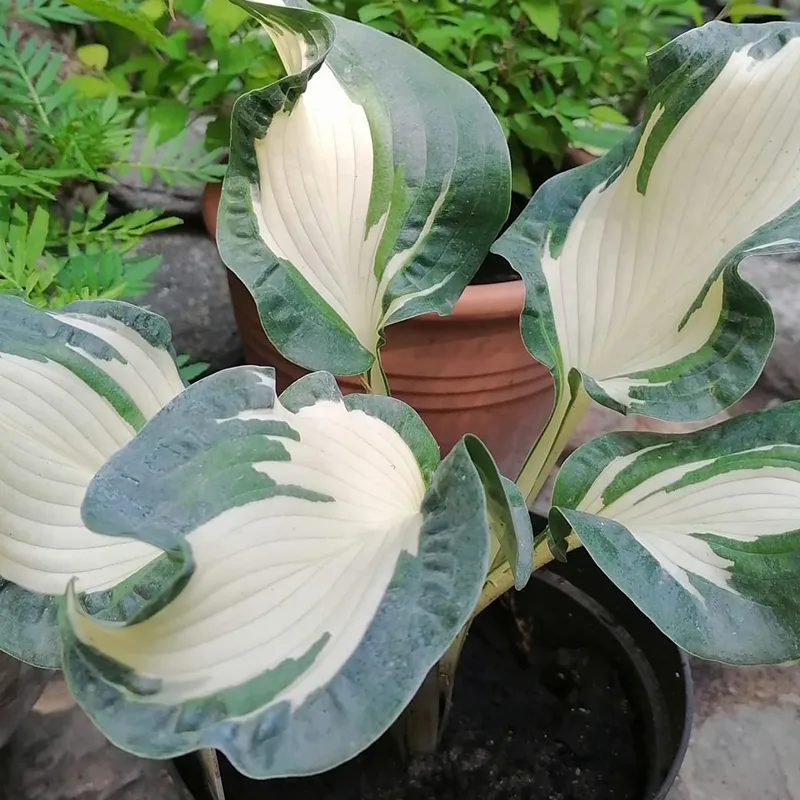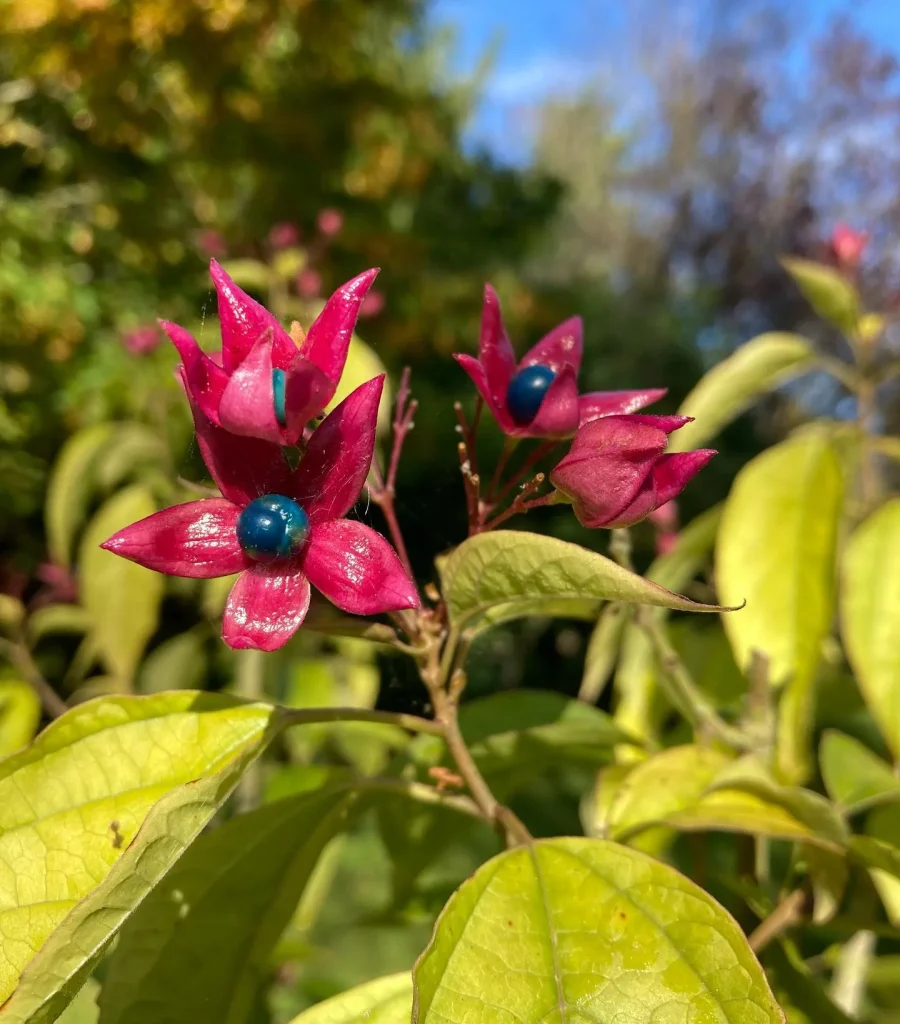
What Is Pinus Bungeana?
Pinus Bungeana, also known as the Lacebark Pine, is a unique tree that’s native to China. It’s part of the Pinaceae family and is known for its stunning, multi-colored bark that peels in patches, revealing a mosaic of greens, grays, and even purples underneath. It’s a slow-growing evergreen, which can reach up to 50 feet tall, making it a great statement tree for larger landscapes. One of the things that always strikes me about this tree is its ornamental value—it’s not just a regular pine but a real visual centerpiece with its peeling bark and rounded shape.
139 Species in Genus Pinus
How Do You Care for Pinus Bungeana?
Caring for a Pinus Bungeana is relatively easy once you understand its needs. Here’s what I focus on:
- Soil: It thrives in well-draining soil. Sandy or loamy soil works well for this pine, and I always make sure not to plant it in heavy clay soil, which can lead to root rot.
- Light: Full sun is best for Pinus Bungeana. While it can tolerate partial shade, I’ve found it grows best when it gets about 6-8 hours of sunlight daily.
- Water: It’s drought-tolerant once established, but young trees need regular watering. I water mine weekly during dry spells to help it establish its root system.
- Fertilizer: I use a balanced, slow-release fertilizer in the spring to promote healthy growth. It’s not a heavy feeder, so once a year should be enough.
- Pruning: This pine has a naturally beautiful shape, so pruning is minimal. However, I do prune any dead or damaged branches to keep it looking its best.
How to Propagate Pinus Bungeana?
Propagating Pinus Bungeana can be done through seeds or grafting, but seed propagation is the most common method.
- Seeds: I’ve had success germinating seeds by planting them in a well-draining seed mix and keeping them in a sunny spot. They can take a while to sprout—sometimes up to a year—so patience is key. I also scarify the seeds lightly before planting to help with germination.
- Grafting: Grafting is another option, but it’s more technical and often done by experienced horticulturists. It’s faster than seed germination but requires a bit more skill.
What to Plant with Pinus Bungeana?
Choosing companion plants for Pinus Bungeana is all about selecting plants that can thrive in similar conditions—well-draining soil and full sun.
- Perennials: I often pair my Pinus Bungeana with drought-tolerant perennials like lavender, sedum, or Russian sage. These plants add color and texture without competing for water.
- Ornamental Grasses: Grasses like blue fescue or feather reed grass can complement the tree’s form and texture.
- Shrubs: I’ve found that shrubs like junipers or boxwoods work well as underplanting since they don’t overshadow the tree and offer a contrast in texture.
Is Pinus Bungeana Toxic?
No, Pinus Bungeana is not toxic to humans or pets. This makes it a safe choice for gardens where pets or children might be present. I always make sure to check toxicity when adding plants to my garden, and knowing this tree is non-toxic was a relief.
What Are the Benefits of Pinus Bungeana?
One of the main reasons I love Pinus Bungeana is its ornamental appeal. The peeling, multicolored bark is simply stunning, especially as the tree matures. But its benefits go beyond just looks:
- Wildlife Support: It provides shelter for birds and other wildlife, adding biodiversity to the garden.
- Drought Tolerance: Once established, it can handle dry conditions, which is a huge bonus in regions prone to drought.
- Longevity: This is a long-lived tree, making it a valuable addition to any landscape for generations.
Common Problems with Pinus Bungeana
While Pinus Bungeana is relatively low-maintenance, there are a few problems to keep an eye on:
- Root Rot: If planted in poorly draining soil, this tree can suffer from root rot. That’s why I always recommend planting in sandy or loamy soil with good drainage.
- Pests: I haven’t had many pest issues with my Pinus Bungeana, but like most pines, it can occasionally attract aphids or spider mites. I deal with these by using insecticidal soap or a strong water spray to knock them off.
- Sunburn: Younger trees can get sunburned in extremely hot climates. I provide some light shade during the hottest part of the day when the tree is still establishing itself.
How Does Pinus Bungeana Compare to Other Similar Pines?
Pinus Bungeana is often confused with other pines, but it stands out thanks to its unique bark. Here are a few comparisons:
- Pinus Nigra (Austrian Pine): While both are evergreens, the Austrian Pine doesn’t have the same peeling bark, and it grows taller and more upright. Pinus Bungeana is more ornamental due to its multi-colored bark.
- Pinus Parviflora (Japanese White Pine): Both species are great ornamental trees, but the Japanese White Pine has softer, bluish needles and a more compact growth habit. Pinus Bungeana, on the other hand, is taller and more rugged in appearance.
Final Thoughts on Pinus Bungeana
Pinus Bungeana is a fantastic choice for anyone looking for a tree that offers year-round interest. Its bark alone makes it stand out from other pines, and its low-maintenance nature makes it a great fit for those who want a stunning tree without too much upkeep. From its wildlife support to drought tolerance, it’s one of my favorite trees to have in the landscape. Whether you’re looking to add a single specimen or create a multi-layered garden with companion plants, Pinus Bungeana is a tree that truly shines.
If i die, water my plants!



